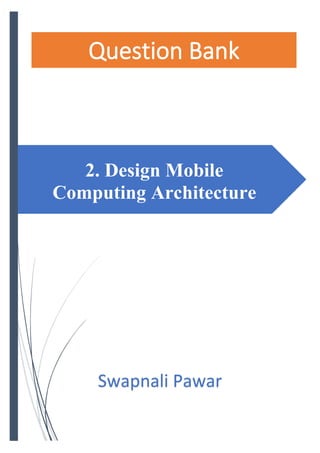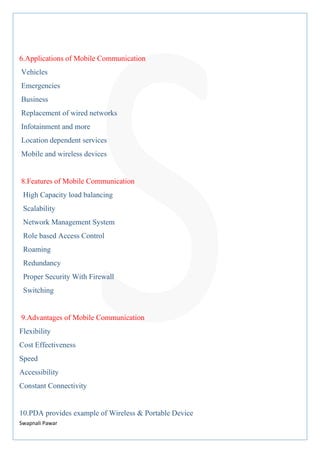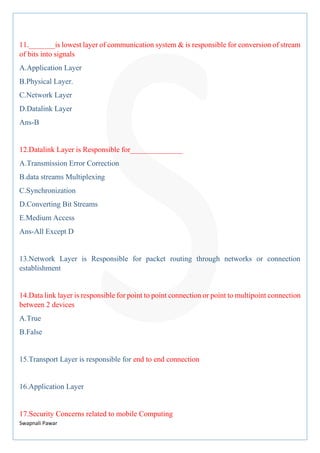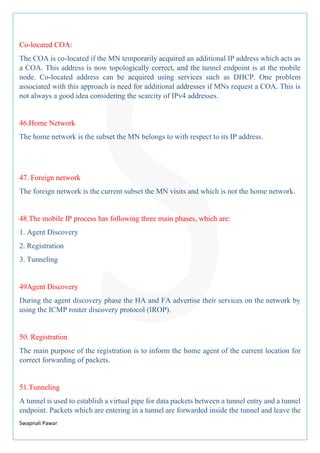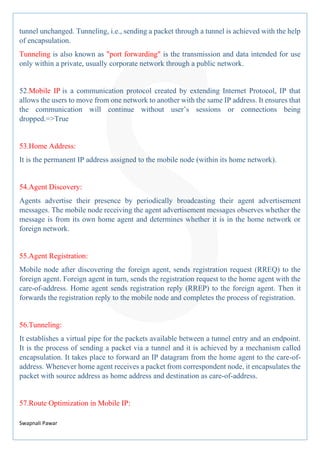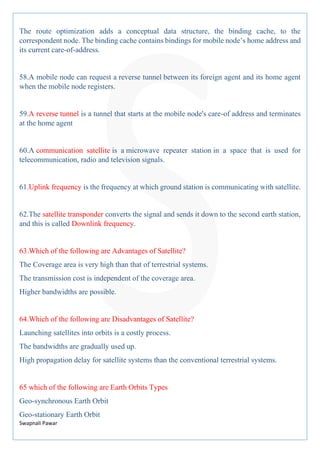This document contains a question bank on designing mobile computing architecture. It includes 57 multiple choice and theory questions covering topics like characteristics of mobile communication, security concerns, middleware, mobile IP, and satellite communication. The questions address layers of communication systems, features of mobile networks, advantages of mobility, and concepts such as user/device mobility, home/foreign agents, registration, tunneling, and route optimization in mobile IP.
